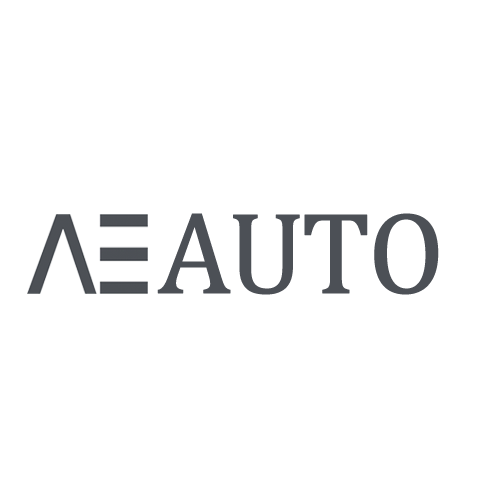New energy commercial vehicle electric drive system
New energy vehicles have the advantages of high efficiency, zero emissions, environmental friendliness, and the control state will not be affected by the outside world, and their share is increasing. New energy commercial vehicles also emerged in this process. The main difference between new energy vehicles and traditional modern vehicles is that the drive mode of new energy vehicles has been changed to electric drive. The electric drive system is mainly divided into four parts: drive motor, transmission, power converter, and controller. The electric drive system is the core of the entire new energy vehicle, which directly affects its economy, safety, reliability and other performances.
01 Electric drive system introduction
The structure of new energy vehicles is mainly composed of electric drive system, chassis part, body frame and various related auxiliary devices. Except for the part of the electric drive system, the functions and structural composition of the other parts are generally similar to those of traditional cars, but some parts are simplified, modified or replaced due to different driving methods. The composition and working principle of the electric drive system are shown in Figure 1, which can be divided into three parts: the auxiliary module, the vehicle power supply module, and the main electric drive module.

Figure1 Composition and working principle of electric drive system
02 Layout classification and characteristics of electric drive system
1) The central electric drive assembly is shown in Figure 2, which integrates the drive motor and gearbox to replace the traditional engine and gearbox, but still requires a drive shaft and a traditional axle. In terms of arrangement form, it is similar to traditional automobile powertrain. Moreover, the transmission line is long, the energy loss is large, and the system efficiency is low; the bottom space is occupied by a large amount, which makes it difficult to arrange the power battery. For example, the central electric drive assembly of the model CeTrax produced by Germany's ZF AG is shown in Figure 3. This system solution is suitable for low-rise and high-rise passenger cars. Based on a "plug-and-drive" design approach, CeTrax can be integrated into current vehicle platforms without major changes to the chassis, front and rear axles or differentials. The maximum output and peak torque reach 300 kW and 4400 N·m respectively.

Figure2 Central electric drive assembly

Figure3 Cetrax Central electric drive assembly
2) The integrated electric drive axle (parallel shaft/coaxial/vertical shaft) is shown in Figure 4, which integrates the traditional drive axle and the motor, and the motor is directly used to drive the wheels after deceleration and torque increase. Save the previous components such as drive shafts and suspension brackets, which makes the cost of loading lower; the transmission efficiency is high; the space occupied is small, and the layout of the power battery pack is more convenient; the effect is poor in NVH; The lower mass is large and biased, and the controllability of the vehicle is not high. For example, the model QT130SPE two-speed integrated drive axle produced by Qingte Group Co., Ltd., as shown in Figure 5, is suitable for a 49T tractor with a rated load of 13 t. Dual magnetic side shifting scheme, smooth shifting, more pleasant driving experience. The integration of traditional system integration effectively frees up chassis space and improves passability.

Figure4 Integrated e-axle

Figure5 QT130SPE two speed integrated drive axle
3) The wheelside electric drive axle is shown in Figure 6. The highly integrated motor, reducer and traditional drive axle cancel the transmission shaft and differential. Because it adopts electronic differential transmission, the transmission efficiency is high; And it occupies less space, and the layout of the power battery is more convenient; but the unsprung mass is large, which is not good for the handling of the vehicle, and the electronic differential control is difficult. For example, the type AVE130 wheel drive axle produced by ZF AG in Germany is shown in Figure 7. The motor type is asynchronous motor, which is applied to 10 m ~ 18 m passenger cars. The maximum power is 2×125 kW, and the maximum axle load Mass 13 000 kg, its controller inverter not integrated on the axle, with two-stage reduction mechanism.

Figure6 wheel side electric drive axle

Figure7 AVE130 wheel side electric drive axle
4) Hub motor bridge As shown in Figure 8, the hub motor part and the drive axle part are highly integrated [1], and the drive motor directly drives the wheel is the future development direction. This kind of drive system has the highest transmission efficiency, and has the advantages of light weight and low energy consumption; the braking energy recovery efficiency is close to 100%, but the cost is high. When the size of the motor is large, there are problems such as overheating, demagnetization, and industrial chain system. At present, the technology in this area is immature. For example, the wheel-hub electric drive axle produced by the Dutch e-Traction company, as shown in Figure 9, has zero emissions, low cost of use, and the efficiency from battery to wheel is as high as 94%, which is 15% higher than that of ordinary electric drive systems, reducing the activity. part. The cruising range is increased by 20%, and the battery size is reduced by 20%. Easy maintenance, low noise, high comfort, high redundancy, independent wheel control, small footprint, high space utilization, flexible control mode, suitable for 12 m ~ 18 m passenger cars and trucks, and a wide range of applications.

Figure8 hub motor bridge

Figure9 e-Traction hub motor bridge
Through the above analysis, it can be seen that at present, the common types of electric drive systems for new energy commercial vehicles are mainly central integrated electric drive systems, wheel-side electric drive axles, and integrated electric drive axles. Among them, the central integrated coaxial electric drive axle is used for medium-sized and heavy-duty trucks and wide-body dump trucks. The wheel-side electric drive axle is often used in the bus series with a length of more than 10 m. Integrated electric drive axles are often used in trucks and 6 m ~ 7 m minibus series. The integrated electric drive axle is divided into three types: parallel axis, coaxial, and vertical axis. Among them, the drive motor of the vertical axis integrated electric drive axle is connected to the drive axle at a vertical angle, and the hyperboloid gear reduction method is adopted, the speed ratio is small, and the system power density is low. The parallel shaft integrates the electric drive axle, the motor and the drive axle are arranged in a parallel state, and the motor is multi-biased. Cylindrical gear transmission is mostly used, with large speed ratio and high power density; due to the large unsprung mass and offset, the vehicle's handling and comfort are poor. The domestic integrated electric drive axle mostly adopts the parallel shaft type.
Compared with the central drive system, the integrated electric drive axle has a higher degree of integration in terms of motors, reducers, differentials and axles; the design and control of automatic transmissions and the control technology of electric drive systems are less difficult; the chassis occupies less space, and the battery Convenient layout; can achieve high energy recovery, light weight, 10% to 25% lower than central drive, effectively reduce power consumption, high motor speed, small size, high power density. However, the motor and gearbox are under the suspension, and the unsprung mass is large, which is not conducive to improving the handling and comfort of the vehicle. The development of automatic transmission design and control, electric drive system control technology, and commercial vehicle drive axle is very difficult. The motor and gearbox of the central drive system are on the suspension, the unsprung mass is small, and the vehicle's handling and comfort are high. The design and control of automatic transmission, and the development of electric drive system control technology are less difficult.
03 Analysis of Electric Drive System Scheme in Heavy Truck Field
3.1 Present Situation of new energy heavy truck electric drive system
The overall configuration of the electric drive system with low-speed motors includes low-speed high-torque single/dual motor direct drive type and low-speed motor with AMT gearbox type. The advantages and disadvantages of the two are shown in Table 1.

Table 1 List of advantages and disadvantages of different electric drive types
3.2 Comparison between motor + reducer and motor + multi-speed gearbox
1) In order to meet the power performance requirements of uphill acceleration and maximum speed at the same time, electric vehicles using fixed gear reducers need to be matched with high-torque, high-speed drive motors. The comparison between the two schemes is shown in Figure 10 and Figure 11 .

Figure 10 Torque-rotational speed comparison diagram of the two schemes

Figure 11 Torque-rotational speed comparison diagram of the two schemes
2) For electric vehicles with two-speed AMT [2-3], increase the transmission ratio of the first gear to meet the driving force requirements of uphill, acceleration, and complex road conditions, and reduce the transmission ratio of the second gear to meet the requirements The high speed requirement of the motor at the highest speed reduces the maximum torque value and maximum speed value of the motor.
3) Under the premise that the relevant parameters of the overall vehicle performance remain unchanged, the use of two-speed AMT will greatly increase the probability of the motor working in the optimal efficiency zone, as shown in Figure 12, and thus improve the economy and battery life of the vehicle. Mileage has been greatly improved.

Figure 12 Comparison of two levels of AMT work efficiency
4) From the perspective of cost, compared with the fixed-speed reducer, although the cost of the transmission has been increased by 1,000-3,000 yuan by using a two-speed transmission, but at the same time, the cost of the motor and battery has a certain cost. Due to the improvement of work efficiency, the power consumption per 100 kilometers is reduced, which in turn reduces the cost of electricity consumption, and also reduces the charging frequency and lengthens the working cycle. From the perspective of the life cycle of the battery, the use of a two-speed transmission will reduce the cost of the entire life cycle of electric vehicles.
5) From the perspective of comfort, the multi-speed transmission reduces the working speed of the motor through a high transmission ratio at high speeds, thereby improving the NVH characteristics of the vehicle (noise, vibration and acoustic roughness generated during work, This is one of the indicators to measure the comfort of car users). Moreover, the premise of improving the comfort is to solve as much as possible the technical difficulties of comfort caused by the shock vibration generated during the shifting process of the multi-speed transmission.
Automotive automatic transmissions mainly include hydraulic automatic transmission (AT), mechanical continuously variable automatic transmission (CVT), electromechanical automatic transmission (AMT) and dual-clutch automatic transmission [5]. Among them, AMT has the advantages of high efficiency, low cost, simple structure, good production inheritance, convenient maintenance, etc., and is most suitable for pure electric commercial vehicles.
3.3 Development trend of new energy heavy truck electric drive system
At present, the main configurations of new energy electric drive systems include low-speed high-torque single motor or low-speed high-torque dual-motor direct drive type, low-speed motor with AMT gearbox type, high-speed motor with reducer type, etc. Some overall system configuration classifications and technical difficulties are shown in Table 2.

Table 3 List of different drive types and technical difficulties
3.4 Development trend of new energy heavy trucks
With the development and research of new energy heavy trucks in the industry, considering the main factors such as economy, integration, and safety, the future development trend of electric drive systems with light weight, high speed, high efficiency, high reliability, and good NVH is in line. In combination, the development trend of new energy heavy trucks mainly includes the following aspects.
1) Low production cost and low maintenance cost. In the daily use of new energy heavy trucks, a certain amount of capital investment is required for charging piles, vehicle maintenance, and battery life. In order to ensure economical requirements, the pursuit of lower costs and maintenance costs is one of the main goals of promoting new energy vehicles.
2) The weight of the body is reduced, and the electronic control system is modularized. The greater its own mass, the higher the battery energy consumption during work. Electric drive systems need to control more and more complex components, and modularization is a way to decompose complex systems into better manageable modules. While reducing weight and optimizing its own structure, it also needs to meet the strength requirements and improve the utilization rate of raw materials. Make it high speed, reduce motor torque; high efficiency, reduce vehicle energy consumption.
3) Larger gradeability and stronger power performance. The power provided by the electric drive system is limited by factors such as motor power and battery size. Heavy-duty trucks have a heavy weight and a high load capacity, and often experience insufficient power when climbing slopes or when road conditions are poor (mud, pits, etc.).
4) Low energy consumption and high reliability. The cruising range is one of the important performance indicators of new energy vehicles, especially in the operation of new energy heavy trucks. The amount of remaining mileage and the energy consumption under complex road conditions all put forward higher requirements for reliability. Conduct in-depth load spectrum studies to identify vulnerable components and increase the working life of the overall system. Strengthen the simulation analysis and test verification capabilities under extreme working conditions.
5) Good driving experience. Use high power and torque density to obtain better acceleration, complex road conditions, uphill and overtaking performance. Optimize the NVH of the electric drive system itself, so as to improve the NVH quality of the whole vehicle.
04 Epilogue
To sum up, the research team introduced the working principle of electric drive, the classification of layout forms and specific products, and briefly described the configuration and implementation plan of electric drive system at the present stage. With the gradual development of new energy electric vehicles, the update iteration of low-end products has greatly improved performance, transmission efficiency, and cruising range, which in turn makes multi-speed transmissions the development trend of electric vehicle transmission systems in the future. In terms of new energy commercial vehicles, the main forms of electric drive systems are wheel-side electric drive axles, integrated electric drive axles and central electric drive assemblies. Buses mostly use wheel-side electric drive axles, trucks mostly use integrated electric drive axles or central drive assemblies, and heavy trucks are suitable for integrated electric drive axles or central drive assemblies. After comparison, in order to meet higher performance requirements and achieve better economic benefits, the electric drive system scheme that adopts the overall configuration of high-speed motor and multi-speed gearbox is more in line with the future development trend.





